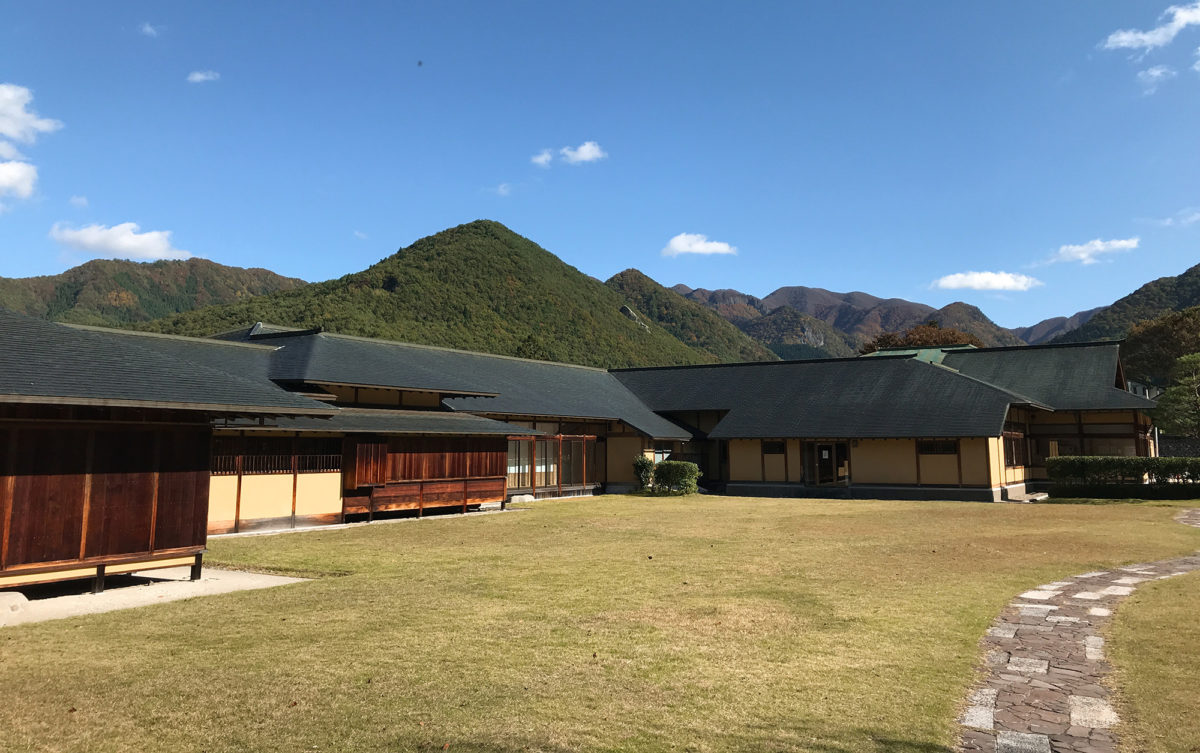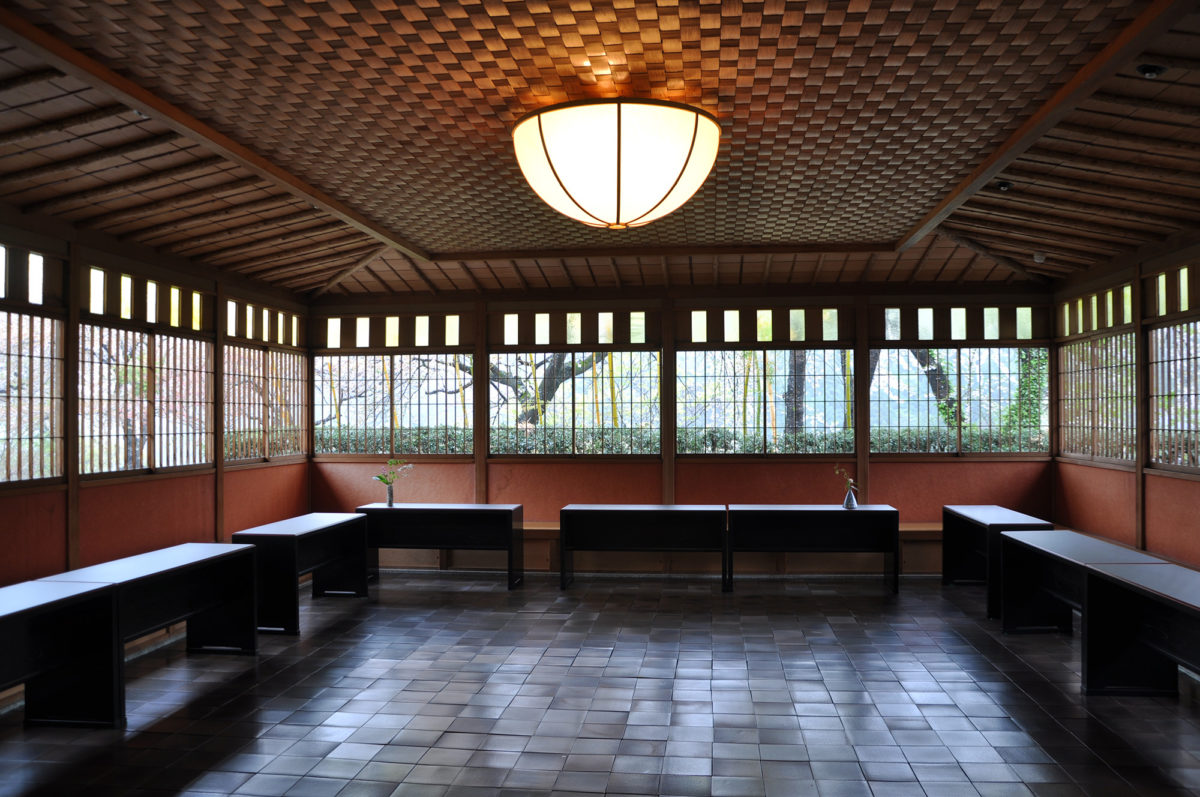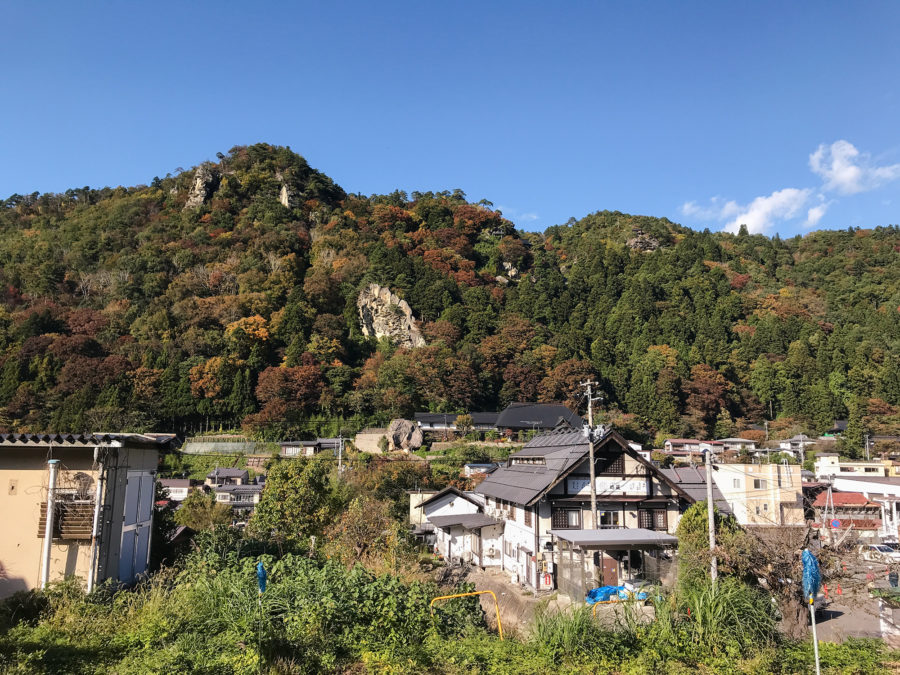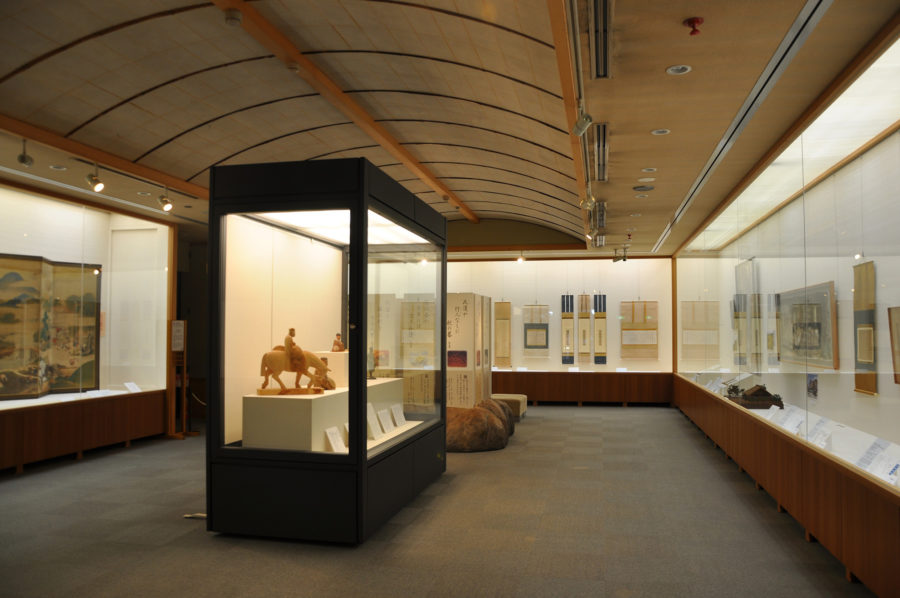The little town of Yamadera lies in a small valley, recognizable by the cliffs jutting out of the forest on one side, rocky outcroppings on which perch halls of the revered Risshakuji Temple (lit. “The Temple of Standing Stones”). A stone stairway on this side of the valley leads through the temple and up to these precipices. In the early morning or after dusk, one can still find the stillness here that Basho spoke of, transfixed by the voices of cicadas in summer.
Basho Museum
in Yamadera
山寺芭蕉記念館 / Yamadera Basho Memorial Museum
Museum dedicated to famous haiku poet Basho

Photo by Craig MacDonald
Photo by Yamadera Basho Memorial Museum

Photo by Craig MacDonald

Photo by Yamadera Basho Memorial Museum

-
Shizukasa ya
Iwa ni shimiiru
Semi no koeThe way stillness is
Sinking into very stones
Voice of cicadasOn the other side of the valley is another stairway. It leads up to a viewpoint looking back—over the river, across the town, to Risshakuji. It also leads to a museum devoted to Matsuo Basho, one of Japan’s most prominent haiku poets. Yamadera was one of the poet’s well-known stops along his journey through the north, immortalized in his travelogue The Narrow Road to the Deep North. He passed this way in July of 1689—hence the cicadas and safflowers referenced in his haiku about Yamadera. You can come relax here before or after visiting Risshakuji, letting it all sink in.
Climbing this other set of stairs, up a gentler slope than those it faces, you will find the hiragana for two of Basho’s haiku marked on the steps, reading one on your way up, and another on your way down. Climbing, step by step you will read: shi-zu-ka-sa-ya—and you come to a small landing marking the first five-syllable line. Taking your next step, still reading off the stones: i-wa-ni-shi-mi-iru—seven syllables; second landing, then se-mi-no-ko-e. Extra steps are provided above, inviting one to play with the meter of the poem for a little while before you reach the top.
This approach brings you to the Yamadera Basho Memorial Museum. The images presented in Basho’s poetry will come to life as you walk about this simple but engrossing museum. Scrolls in Basho’s own hand will show you how he presented some of the haiku, as gifts or in competitions. Basho’s stated goal was to find and observe remote places worthy of fresh verse. His accomplishment was not only a splendid collection of transcendent poetry but also a lively, engaging selection of prose travelogue, passing from one landmark to the next while telling how he passed and whom he met.
In addition to the permanent exhibits, there is also special-exhibition room with exhibits that are rotated on a semi-regular basis. The special exhibit might focus on an aspect of Basho’s life and work, or might delve into the culture and history of Yamadera. For example, when I visited in October, the special exhibit was the sixth installment in a series of exhibitions which highlighted Yamagata’s history as a prosperous region for benibana (safflower) production.
-
Last Update
March 24, 2020
Area Near Miyagi
Details
ADDRESS
4223 Yamadera, Yamagata, 999-3301
ACCESS BY PUBLIC TRANSIT
8-minute walk from Yamadera Station (Senzan Line)
ADMISSION
Museum: ¥400
Teahouse: ¥500
Museum + teahouse: ¥770
CREDIT CARDS
Not accepted
LANGUAGES
Limited English. The permanent exhibition hall has good English signage. For visitors who wish to have an English-speaking guide, please contact the museum in advance.
HANDICAP ACCESSIBLE
Museum: Yes
Teahouse: No
HOURS
Museum: 9:00–16:30
Teahouse: 10:30–15:30 April–November
CLOSED DAYS
Museum: Irregular
Teahouse: December–March
PHONE
023-695-2221
OFFICIAL URL
NON-SMOKING
Yes
Visit Miyagi © 2018 All Rights Reserved.